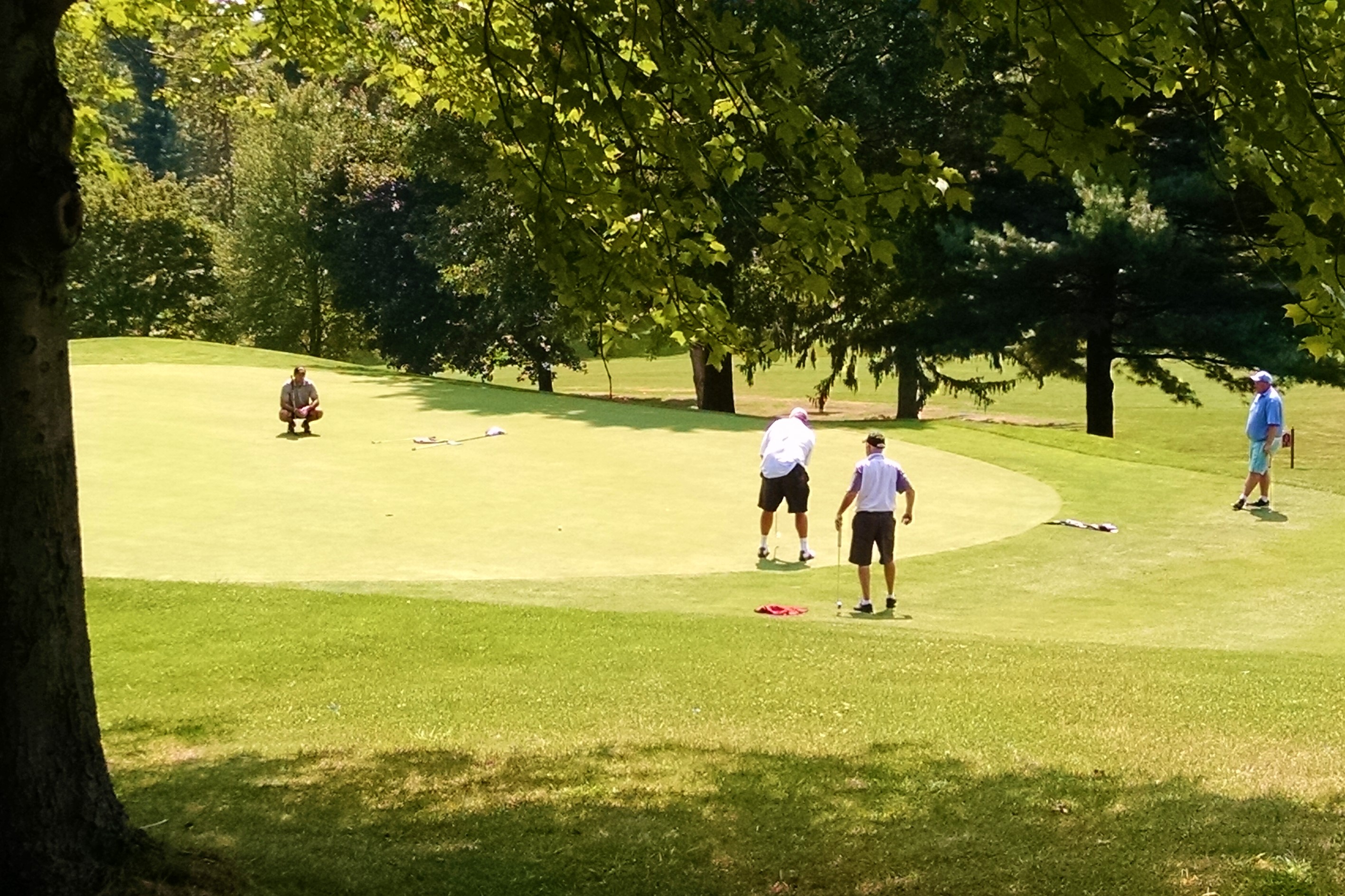From Hickory Shafts to Titanium Heads
Reading Country Club, located just east of the city of Reading in Berks County, Pa., is a pristine example of golf course architecture from the games “golden years.” Designed by Alexander Findlay, a Scotsman known as “The Father of American Golf”, the RCC layout remains a true shot-makers course that has challenged golfers from the era of hickory shafted niblicks to today’s titanium and graphite technological wonders.
The first nine holes opened in 1923. A second nine, designed by Alex and his brother Fred Findlay, opened for play in 1925. The clubhouse was completed in 1931.
The Nelson years. In 1937, Byron Nelson was hired as the club’s golf professional. He arrived at Reading that spring after winning the Masters. He used the $1,500 first-place check to stock the pro shop. That summer he played on the first Ryder Cup team to win on British soil. While in England he finished 5th in the British Open. In June 1939 he won the U.S. Open at the Philadelphia Country Club’s Spring Mill Course by defeating Craig Wood and Denny Shute in a play-off. Nelson left RCC to become the professional at the Inverness Club in Toledo, Ohio in 1940.
The Poe legacy. Henry Clay Poe followed Nelson as the professional at RCC. He came from Winged Foot Golf Club where he had been working as Craig Wood’s assistant. Poe served RCC until 1965, pausing only to work in a defense plant in 1943 and 1944. In 1953, he was elected president of the Philadelphia Section PGA and held the office through 1956. He was elected president of the PGA of America for 1975 and 1976. During his term in office he was instrumental in changing the Ryder Cup matches to include all professionals from Europe instead of just Great Britain and Ireland, which turned the matches into one of the world’s premier golf events. He was elected to the Philadelphia Section PGA Hall of Fame in 1996.

The Slammer’s Record. In July 1949, Reading Country Club hosted the $15,000 Reading Open, a PGA tour event. Byron Nelson’s course record 65 was broken twice during the first round on Thursday, July 7. Sam Snead fired a 63—a record that still stands—and Lawson Little came in with a 64. After three rounds it was Snead and Dr. Cary Middlecoff, tied at ten-under-par 200, leading the field by four strokes. Middlecoff, the winner of the U.S. Open that June, holed a side-hill six-foot birdie putt on the 18th hole to gain a one-stroke lead on Snead. Snead, playing in the last pairing right behind Middlecoff, reached the 72nd green with a chance to force a play-off. Snead faced a four-foot side-hill birdie putt for the tie. He missed, giving Middlecoff the victory. Middlecoff shot rounds of 67-68-65-66 for a 266 total and won $2,600.
The Ryder Cup comes to RCC. In September 1953, RCC hosted a two-day Ryder Cup challenge match pitting the U.S. Ryder Cup team against a team of PGA touring professionals, led by Jimmy Demaret. The Ryder Cup Team, led by playing captain Lloyd Mangrum, defeated the challengers 12 1/2 to 7 1/2. They competed for $15,000 of which $3,000 was set aside for traveling expenses for the trip to England.
Ch-ch-ch-changes. Ownership changed several times over the decades. In 2006, Exeter Township acquired the property through eminent domain to maintain green space in the township.
Under township ownership, Reading Country Club is open to the public, providing broad access to the facility for golf and other community oriented events.
